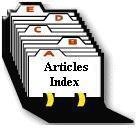My first foggy pigeon was a blue barless cock I received from Dr. Willard F. Hollander at the 1983 Lincoln, Nebraska National Pigeon Show. Hollander studied this trait for several years prior, trying to understand its mode of inheritance. He thought there may be a connection between the foggy vision trait and the barless pattern.
Foggy vision - blue barless cock, #040-E. Note width of forehead (between eyes) in Figure 1; and the "knob-like" appearance of forehead in Figure 2.Since receiving the foggy-vision barless cock, I've raised several foggy barless descendants displaying a wide range of expressions. After about half grown, some can be identified by their peculiar behavior when you approach them closely. They appear to have a frozen owl-like gaze in your direction with their bill slightly elevated. Unlike normal birds which seem comfortable viewing you with one eye, foggy birds tend to look at you over their bill, with both eyes, not unlike a real owl. This aspect may shed light on the malady. Their skull appears wider between the eves, thus producing a flattened "knob-like" head with wide-set eyes (see photos). In a few instances the widened skull was noted in newly hatched squabs.
Fledglings appear to be vision-impaired and less mobile than loft mates; and restricted to the floor. With ensuing age mobility seems to increase, suggesting either adaptation to their condition(s) or that their vision has improved; or both? As adults, some tend to fly to upper roosts freely and some limit themselves to the lower two feet of roosting sites. None of my foggy birds nested in upper level boxes.
In my lofts, finding feed and water does not seem particularly difficult; and they raised squabs successfully without special attention. However, individual breeding cages are more suitable. Nesting birds are extremely hostile when ones hand approaches for inspection. In my opinion, this excessive hostility is generally associated with birds having visual and/or motor control problems.
This vision problem called foggy appears to be hereditary. Foggy x normal matings produce all "normal" offspring. Backcrossed and brother x sister matings produce both foggy and normals. Foggy x foggy matings would be expected to produce only foggy offspring; if it were a simple recessive trait (gene). Instead both foggy and a small percentage of normal offspring are produced. It is possible that the criteria presently used to assess the wide variability of this trait are inadequate and/or the mode of inheritance is not simple. Can one extreme expression of foggy-vision appear "normal"?
Foggy vision in pigeons is not likely to catch-on among the general fancy. However, their value for scientific study has not yet been realized. It would be nice to have a place where such oddities can be maintained indefinitely. Information on foggy-vision is mostly limited to a handful of pigeon fanciers. With some hope, they will become talked about, bred and studied.
